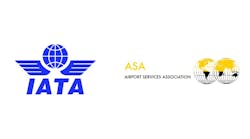For the world, spring’s arrival means flowers and pollen, sunny days, and the promise of summer’s approach.
For ARSA and its allies, the season brings data and analysis, industry insight, and the tools for better policy. As Americans “spring forward” in observance of daylight savings time, the aviation world looks forward to tackling its most-pressing issues.
In the beginning of every year, the association administers its member survey to gather intelligence about the maintenance community’s business outlook, workforce needs, and operational challenges. The yearly exercise allows repair stations to help shape the association’s activities and programs while supporting its global advocacy. This year’s survey wrapped in early April with 79 responses.
Every March, ARSA’s Legislative Day attendees are briefed on that year’s Global Fleet & MRO Market Assessment performed by Oliver Wyman. The annual analysis plots the future of the maintenance market alongside global commercial and business aviation fleets and measures the “right now” economic impact of repair stations around the world.
Together these two sources provide key tools for defining the industry and helping it grow. Need procedures for how to utilize these tools? Three steps:
Step 1: Review the Numbers
The aviation maintenance industry is a global economic powerhouse. According to ARSA’s 2017 Global Fleet & MRO Market Assessment performed by Oliver Wyman, global air transport MRO is expected to be $75.6 billion in 2017 and will approach $110 billion in a decade. Even when tested against four different economic scenarios ranging from “cloud nine” robust growth to “black swan” disaster, the maintenance market fares well against each variation – actually outperforming the baseline forecast in three out of four. It’s a durable industry with a healthy future.
In the United States, nearly 277,000 men and women work in maintenance and parts facilities, bringing home an average annual wage of more than $58,000 (according to the Bureau of Labor Statistics). More than two-thirds work in FAA-certificated repair stations; there are almost eight times as many contract maintenance employees as airline mechanics.
The ARSA survey team is still breaking down the survey data, but finding and retaining skilled workers has emerged as a key issue. Respondents anticipate the increases foreseen in the market assessment: Nearly 60 percent expect their revenue and markets to grow in the next year and practically none foresee contraction. To support this expansion, businesses will either add positions overall (55 percent) or at least hire to keep pace with attrition (44 percent).
Step 2: Put the Numbers in Real-World Context
Unfortunately, finding the right people is challenging. Eighty-two percent of survey respondents reported having at least some difficulty over the past two years finding qualified workers to fill technical positions – nearly a third have had “a lot of difficulty.” Overall, more than half of this year’s respondents reported having open, unfilled technical positions with the number of vacancies ranging from one to 190 with an average of 19.
Those open positions and the problems filling them are translating into real pressure on the industry. When asked to identify the most-pressing risks to their company, 52 percent selected “difficulty finding/retaining technical talent.” That makes the skilled worker shortage the second most daunting challenge (just behind managing regulatory burdens), in the pantheon of concerns keeping ARSA members awake at night.
Step 3: Take Action
If you’re one of those losing sleep about our industry’s skills shortage, help the association and the aviation community:
(1) Arm yourself with more data, including state-level assessments of maintenance and manufacturing employment, at arsa.org/economic-data.
(2) Scroll through the last three years’ worth of updates on arsa.org/technical-workforce-development to see what’s been happening in aviation personnel policy.
(3) Get involved at arsa.org/legislative (facility visits make issues personal for elected officials). Watch (and then share) “You Can’t Fly Without Us,” ARSA’s seven-minute public television documentary at avmro.arsa.org.
(4) Keep an eye out for more chances to share your insight with ARSA. Beginning this spring, the association will routinely distribute, via arsa.org, “quick question” surveys. In less than a minute, you can help us gather even more data to even better support our advocacy on your behalf.
Christian A. Klein and Brett Levanto are executive team members for the Aeronautical Repair Station Association. To learn more about the association and its work on behalf of the maintenance community and the flying public, visit arsa.org.



